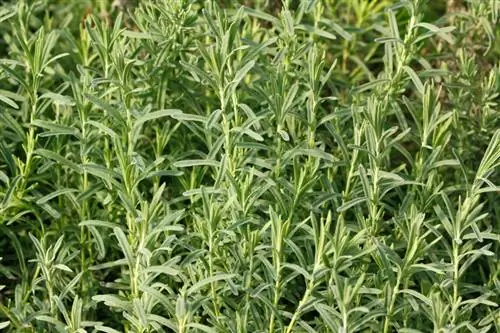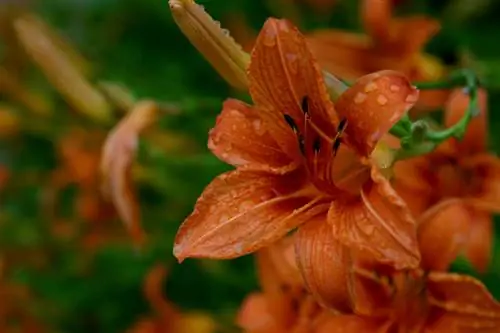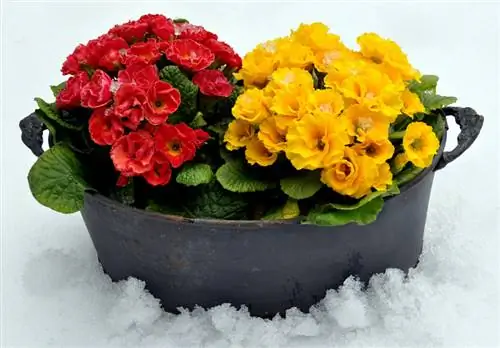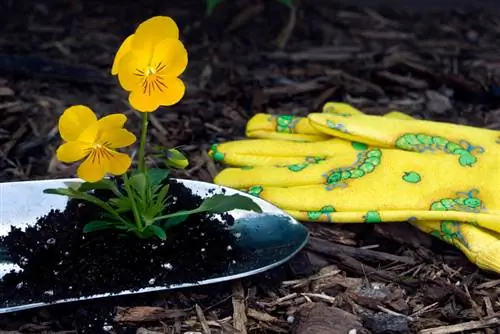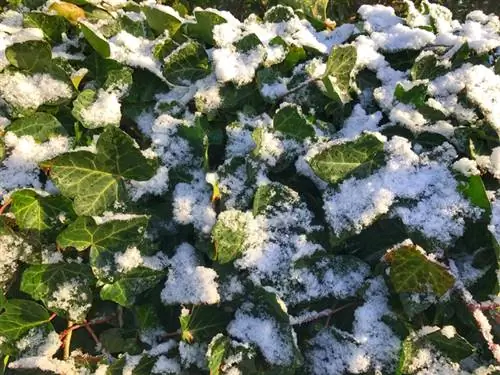- Author admin [email protected].
- Public 2024-01-10 23:11.
- Last modified 2025-01-23 11:20.
The cherry laurel, originally native to the temperate regions of Asia Minor, is only partially frost-resistant, as it only has to withstand sub-zero temperatures in its natural habitat in exceptional cases. On the other hand, the cold forms have little effect on the cultivated forms found in our gardens. You can find out which varieties survive frosts well and how to overwinter sensitive species in the following article.
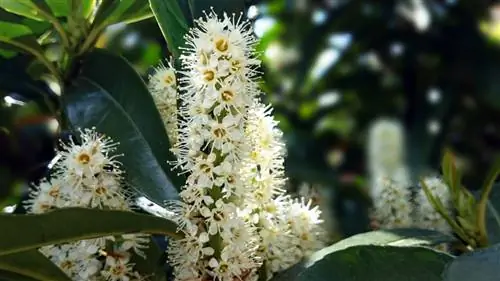
Are all cherry laurel varieties hardy?
Some hardy varieties of cherry laurel include Angustifolia, Etna, Herbergii, Otto Luyken, Diana and Mount Vernon. These varieties can withstand temperatures as low as -20 degrees Celsius for short periods, while more frost-sensitive varieties such as Rotundfolia may require protection.
Not all varieties are completely hardy
Whether the evergreen tree can withstand long periods of cold without damage varies from variety to variety. If you live in harsh areas, you should only choose cherry laurel species that can withstand temperatures of up to -20 degrees for short periods.
The following varieties are considered extremely frost-resistant:
- Angustifolia (Portuguese cherry laurel)
- Etna
- Herbergii (Upright Laurel Cherry)
- Otto Luyken (wide-growing laurel cherry)
- Diana
- Mount Vernon
Some popular species are more suitable for mild regions
Frost-sensitive varieties such as Rotundfolia often freeze back a little in winter. But even if the laurel cherry shows significant cold damage, this is no reason to worry, because the tree usually sprouts again willingly.
Nevertheless, you should give conditionally winter-hardy varieties in harsh regions a place protected from the wind near the house.
Protect cherry laurel from frost
A ten centimeter thick layer of mulch made of leaves or bark mulch protects the soil from drying out due to icy winds and warms the root area of the plants. In harsh regions, protect young plants from excessive cold by placing pine branches upright on the ground. Stick the branches firmly into the ground and secure them around the cherry laurel so that the winter protection cannot be blown away.
In winter, potted plants are particularly at risk because the substrate in the pot freezes quickly and the wood can no longer absorb any moisture. Therefore, place the laurel cherry in a protected corner near the house. Protect the planter from the cold with bubble wrap or burlap. Alternatively, you can overwinter the cherry laurel in a bright, frost-free room or in an unheated greenhouse.
Important: Water the laurel cherry even in winter
The evergreen shrub evaporates a lot of moisture over the large leaf surface on sunny or windy winter days. On frost-free days, the cherry laurel needs additional watering.
If the sun falls on the foliage during the day and the plant cannot replace the evaporated liquid because of the frozen ground, the leaves turn yellow. The laurel cherry sometimes even reacts to these so-called cold frosts by completely shedding its leaves. However, this does not mean that the tree has died.
In spring, cut back all frozen parts of the plant deep into the he althy wood. The cherry laurel usually sprouts again and after just a few weeks there is no sign of the winter damage.
Tips & Tricks
Cherry laurel is a beautiful solitary tree that brings color to the winter garden with its intensely colored foliage. It's wonderful to see how frost decorates the leaves and glitters in the sun. SKb


